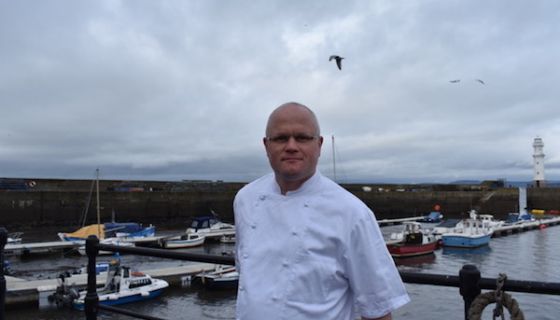As the citizens of Edinburgh prepare the celebrations to mark the 70th anniversary of their Arts Festival, no one visiting this enchanting city will fail to notice the significant changes that have transformed its city centre.
The building that once housed The Scotsman newspaper is now home to The Scotsman Hotel. Princes Street may still be home to shoppers although the closed doors of the British Home Stores still comes as a shock.
Meanwhile George Street, parallel and one street behind, has become a magnet for anyone who is hungry and thirsty, with a particular emphasis on the latter. The development of the new buildings that face on to the still handsome St Andrew’s Square has attracted several well-known London brands: Wahaca, for Mexican food, Dishoom for that re-imagination of a Mumbai café and wagamama for noodles.
So far, so very typical of many a modern British city, manifesting itself also in the huge demand for chefs illustrated in the windows of the city’s recruitment agencies. But a ten-minute walk from St Andrew’s Square, past Harvey Nichols and the city’s bus station, brings one to a restaurant whose opening could just have been possible 70 years ago.
In early April at One Forth Street, next to the heavily Swedish-influenced Söderborg café and on the borders of the Broughton and New Town suburbs, a chef opened a French restaurant called Le Roi Fou, ‘the mad king’, after Louis XVI. And in doing so, Jérome Henry, 44, the chef in question, broke a few conventions.
First of all, the premises he took over had been a hamburger restaurant called Burger Meats Bun, something that Henry realised the implications of only after signing the lease and before undertaking the Herculean task of cleaning out the heavily greased former kitchen and its ducts.
Le Roi Fou is also small, with two tables in the front windows; six to eight tables in the back; and eight stools around the curved bar. Henry works in the downstairs kitchen ably assisted by two other chefs, with three particularly friendly waiting staff on the ground floor. But, very much in keeping with all those restaurants that used to be found in every small city in France and, albeit to a lesser extent, across the UK too, Le Roi Fou is the realisation of one chef’s vision.
This is a dream that, unexpectedly, has its roots in the US, despite Henry’s birthplace in the Haute-Savoie in France and his years at the stoves at Shoreditch’s Les Trois Garçons and then as head chef for Anton Mosimann’s private club in Belgravia in London.
But it was during his early years working in Chicago that Henry appreciated the attractions of neighbourhood restaurants and particularly those where the windows allow the customers to look in and see the tables and the bar. Henry, who had no previous connection with Scotland –although, like many top chefs, he has been a customer of Keltic Seafare in Dingwall for many a year – noticed the Roi Fou site when he was up in Edinburgh and realised that it fitted his tight budget. Having spent his allocated £250,000, he moved in, ably and colourfully assisted by his partner, the professional set designer Isobel Nash.
Some of the above may have prepared you for the menu, which, perhaps as a sign that Henry concentrates on what he considers important, looks somewhat underwhelming. There is no date and there could be some dispute about the order of the dishes – the two soups come at the end of the starters, the fish after the main courses. But there is no doubting the cooking.
Here are eight starters, five meat courses and a vegetarian main course as well as two fish courses that manage to combine freshness, modernity, complexity, flavour, classicism and colour and take no short cuts.
We began with two shellfish-based first courses, plump Isle of Skye scallops grilled and served with fresh peas and asparagus (an ingredient Henry seems particularly fond of) and a Hebridean crab chowder with turnips and buttermilk, almost alive with the freshest crab imaginable.
Our two main courses were to show off different aspects of the kitchen’s ingenuity. There was precision in the combination of two slices of new season’s lamb rack alongside the much more succulent meat from the braised belly of the lamb. But my dish was all about the saucing. It was the promise of a saffron sauce that lured me to choose the grilled cod that was not only delicious but also copious, served in a bowl with a spoon. Not a drop was left. With this we relished a fine bottle of Domaine Jean Chauvenet, Nuits-St-Georges Les Lavières 2010 (£68), two desserts, poached rhubarb with crème-fraiche ice cream and a Valrhona chocolate marquise. I paid a bill of £161 without service.
After doing so, I watched two parties arrive close to 10 pm. One was a Frenchwoman who read aloud the menu in great anticipation while the other was a group of four young Asians. My last view of Henry was him hurrying down to the kitchen to cook their orders, having brought up the six plates of ‘panisse’, the crisp southern French chickpea fritter he was serving in generous neighbourly mode as an amuse-bouche – and after which America’s arguably most seminal restaurant is named.
Le Roi Fou 1 Forth Street, Edinburgh EH1 3JX; tel 0131 557 9346
Image courtesy of Oh! Taste.















